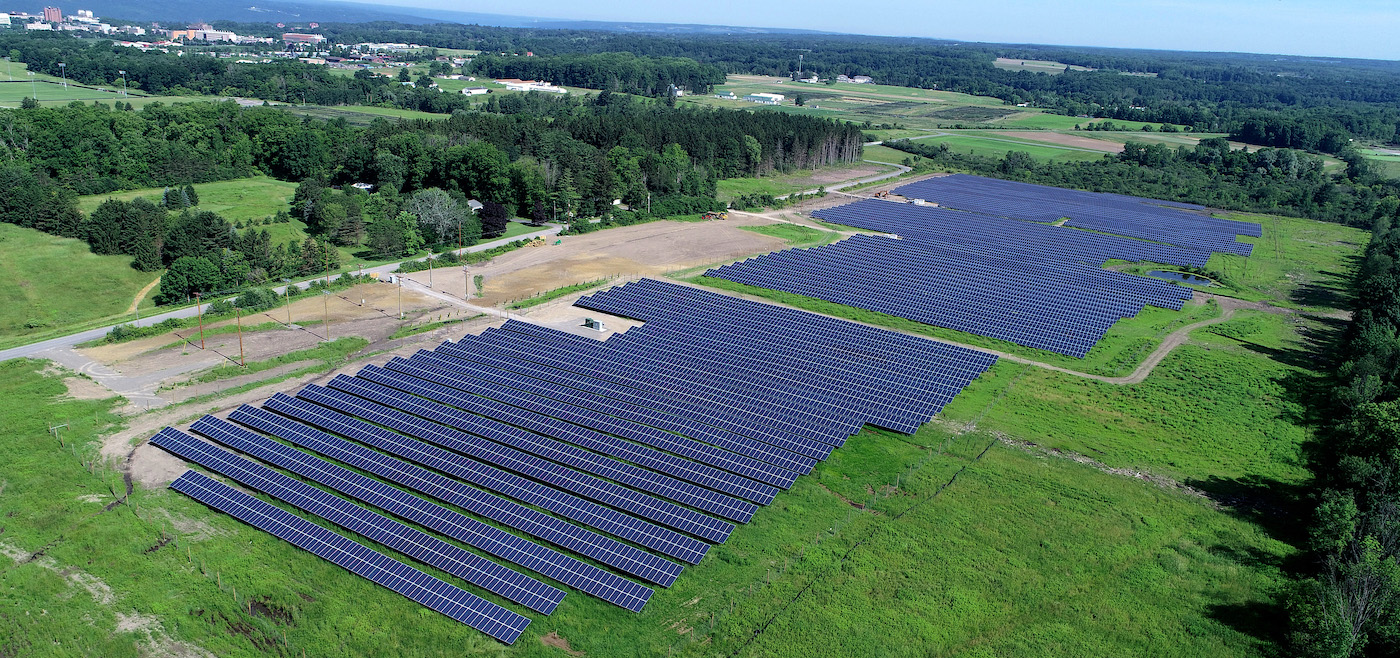By Natalie Monticello | April 15, 2020
In a new step towards sustainability, Cornell celebrated the opening of its sixth, and largest, major solar project on Jan. 17.
The newly minted 18-megawatt Cascadilla Community Solar Farm will be responsible for generating 20 percent of Cornell’s energy, making strides towards the University’ goal of becoming entirely carbon neutral by 2035.
Cornell participates in a voluntary set aside program of New York’s Regional Greenhouse Gas Initiative, a cap-and-trade style program that allows Cornell and other participants to claim renewable energy credits.
According to Sarah Zemanick, director of the Cornell University Campus Sustainability Office, for every megawatt-hour of renewable power generated by a Cornell project, New York pulls a correlated number of allowances out of the RGGI auction — therefore reducing the total amount of carbon that can be emitted by the power industry in the state.
“Because of the solar farm, Cornell now receives the energy from Renewable Energy Credits equivalent to about 20 percent of the Ithaca campus’ annual electricity usage,” Zemanick said.
Initial planning for the project began in 2014, while actual solar panel construction took about six months after ground-breaking. The solar farm began exporting power in mid-January.
“It took several months more for the utility [company] NYSEG [New York State Electric and Gas Corporation] to complete the upgrades to the distribution system necessary to interconnect the project to the grid,” Zemanick said.
While Zemanick’s team originally led the project, the University worked in collaboration with Distributed Sun to facilitate development and securing permits. Later, True Green Capital took over the project’s construction and operations.
Articulated in the University’s “Climate Action Plan,” the construction of additional solar cells is a part of a broader strategy to reduce Cornell’s carbon emissions by investing in projects — like the Cascadilla Solar Farm — that expand renewable energy.
In recent years, Cornell has made substantial progress towards that goal: Emissions have fallen 36 percent from the University’s 2008 baseline and 50 percent compared to 1990 emissions.
The Cascadilla Solar farm is located in Dryden, New York and is spread over three separate sites: one to the north of Stevenson Rd. near Cornell’s compost facility, and two south of Stevenson Rd, along Turkey Hill Rd. and Dodge Rd.
Cornell operates five other solar farms. There are panels scattered throughout rooftops on campus that provide 0.09 megawatts of energy, a 2-megawatt farm in Geneva, New York, a 2-megawatt farm in Harford, New York and two 2-megawatt farms located in Aurora, New York.
Correction, April 15, 4:20 p.m.: A previous version of this story incorrectly listed the date of the project’s opening as March 1, misstated the amount of power it will generate and incorrectly identified the number of other solar farms Cornell runs. The story has since been updated.

